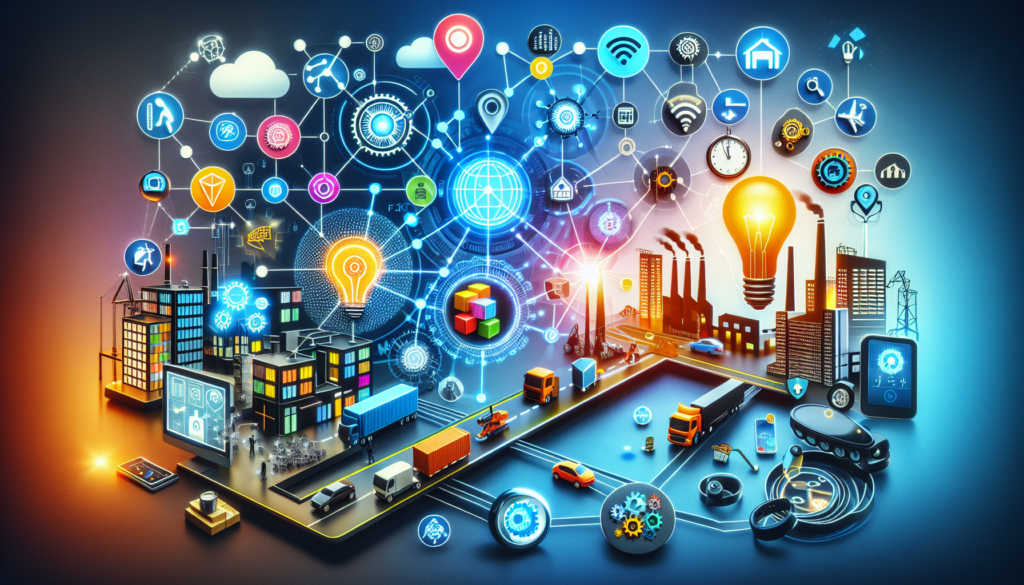The concept of the Internet of Things (IoT) has emerged as a transformative force in logistics and supply chain management, interconnecting devices as never before and providing data to optimize operations from manufacturing to the final delivery. The application of IoT in the supply chain not only allows for increased visibility and control over resources but also facilitates a proactive response to real-time challenges, improving efficiency and reducing costs. This article delves into how IoT is reshaping the supply chain, with a technical analysis of its components and practical considerations derived from current case studies.
Advanced IoT Applications in the Supply Chain
Real-Time Tracking and Monitoring
The adoption of IoT sensors for product tracking offers unprecedented visibility throughout the supply chain. These devices can monitor critical conditions such as temperature, humidity, and the structural integrity of packages, which is essential for perishable goods and pharmaceuticals. Analysis of the collected data allows for the anticipation of potential problems and action before they turn into significant losses or delays.
Automation and Artificial Intelligence
The integration of IoT with automation systems and Artificial Intelligence (AI) algorithms has led to the creation of self-optimizing supply chains. Assets like warehouse robots and automated guided vehicles use IoT data for routing and storage decisions, improving space efficiency and reducing the order cycle time.
Inventory Management and Automated Replenishment
IoT transforms inventory management by enabling automated stock replenishment based on precise, real-time data. RFID sensors and QR codes, when scanned, provide an instant and accurate count of products, reducing human errors and allowing enterprise resource planning (ERP) systems to automatically order replenishment when stock reaches a critical point.
Comparative Analysis: Before and After IoT
When comparing the pre-IoT supply chain with the present, the most notable difference is the capability to make real-time data-based decisions. While traditional supply chains relied on projections and estimates with a certain margin of error, the current approach is more scientific and precise. This precision reduces the need for maintaining extensive “just in case” inventories, freeing up capital and reducing storage costs.
Case Studies: IoT in Action
Pharmaceutical Industry Case
In the pharmaceutical sector, monitoring the cold chain for temperature-sensitive medications is a perfect example of the added value of IoT. A relevant case study is the use of IoT sensors by a global pharmaceutical company to track their products along the supply chain. These sensors ensure that vaccines and medications are kept within safe temperature ranges, with automatic alerts generated in case of deviation, allowing for quick interventions and preventing losses of vital products.
Efficiency in E-commerce Logistics
A leading e-commerce company implemented an IoT sensor network to optimize its warehouse operations. With the help of AI algorithms, they analyzed sensor data to predict purchases and pre-position inventory near high-demand areas. This resulted in faster delivery times, improving customer satisfaction, and lowering shipping costs.
Projections and Future Innovations
Looking forward, the integration of IoT with emerging technologies such as blockchain promises to further revolutionize the supply chain. The combination of blockchain’s immutability of records with the data generated by IoT creates transparency and security in the supply chain that facilitates unprecedented trust among stakeholders.
Moreover, the future expansion of 5G infrastructure will improve connectivity and speed for IoT, which will allow for greater data collection and real-time control at a level previously unattainable.
Conclusion
At the intersection of technology and logistics, IoT stands out as the cornerstone of intelligent supply chains. With the input of real-time data enhanced by AI and automation technologies, the evolution toward autonomous and self-correcting supply chains is already underway. Organizations that quickly adopt and adapt to these technologies will not only improve their operational efficiency but will also position themselves as leaders in the new era of digital logistics.

